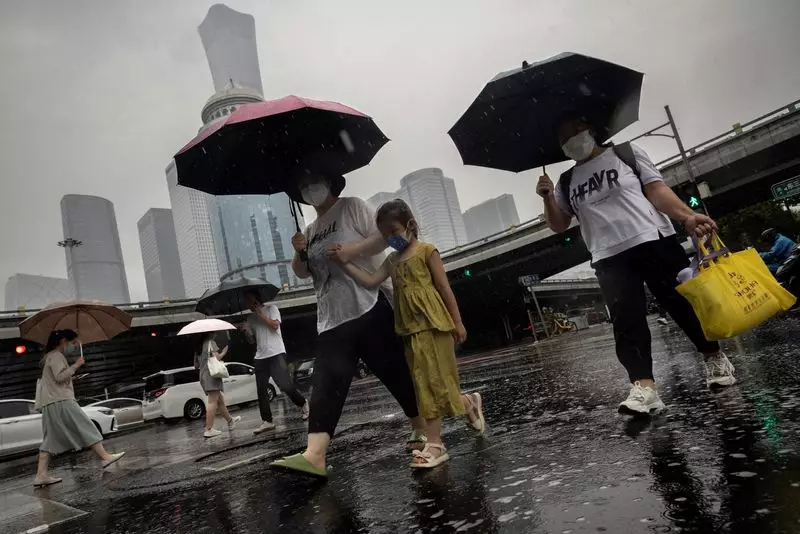As the global economy continues to stabilize and signs of cooling inflation emerge, China finds itself grappling with an entirely different set of challenges. While many nations are celebrating the downturn in inflation rates following an unprecedented period of soaring prices, China is steadily becoming a focal point for concerns about entrenched deflation. In August, the country’s consumer price index (CPI) recorded a 0.6% increase compared to the same month the previous year—marking the fastest rise in six months. However, this surge, largely driven by erratic weather affecting food prices, offered little comfort regarding the underlying demand dynamics within the world’s second-largest economy.
Despite this seemingly positive CPI uptick, core consumer inflation—stripped of volatile items like food and fuel—revealed a more worrying trend, slowing to 0.3% in August, a decline from 0.4% in July. This figure represents the lowest inflation score in three and a half years, signaling a weakening grip on price growth, which threatens overall economic momentum.
Dangers of Prolonged Deflation
The specter of prolonged deflation looms large, prompting dire warnings from analysts at Morgan Stanley. Their research indicates that persistent deflation could lead to significant reductions in real wages, dampening consumer spending, and adversely affecting corporate revenues. Such an outcome drives a vicious cycle of declining economic activity, which, in turn, could trigger widespread layoffs across industries.
The current situation draws parallels to Japan’s economic trajectory in the 1990s, characterized by stagnation and deflation that resulted in what has been retrospectively termed the “lost decades.” This historical cautionary tale emphasizes how trap-like deflation can become, creating severe obstacles for recovery. Analysts emphasize the urgency of implementing preventative measures to circumvent a similar fate for China, as the ramifications could extend beyond its borders, impacting global economic health.
In response to these alarming trends, the Chinese government has initiated various economic stimuli aimed at rejuvenating demand. Notably, increased lending to the industrial sector was intended to elevate production and, ideally, consumption. However, these measures have predominantly inflated supply without corresponding demand, exacerbating the deflationary spiral. The short-term gains in employment and income have proven negligible, highlighting the inadequacy of these interventions in addressing deeper systemic issues.
To confront this growing deflationary pressure, economists argue that sweeping fiscal policies are necessary. Potential strategies may include targeted support for the ailing real estate sector and enhancements to social welfare programs. These efforts aim not only to stabilize housing prices but to fortify consumer confidence, thereby encouraging spending. Nevertheless, forecasts suggest that substantial shifts in policies or economic direction may not materialize promptly as bureaucratic hurdles and entrenched priorities come into play.
China’s economic predicament is not solely a domestic concern; its implications reverberate globally. As a critical node in international trade, China’s deflationary trends have already manifested in reduced core inflation rates in regions like the United States and the Eurozone. Observers have noted that the ongoing deflation could potentially lower core inflation in these key economies by approximately 0.1 percentage points, a significant figure as central banks reconsider interest rate adjustments in response to evolving economic conditions.
As these global economies encounter lower inflationary pressures, they face a daunting balancing act: managing domestic monetary policies while responding to the external influences of China’s economic activities.
China’s struggle against the tide of deflation presents multifaceted challenges that require a delicate interplay of policy recalibration and economic stimulus. Understanding the historical precedents of deflationary traps serves as critical guidance for policymakers as they navigate the complexities of a post-COVID recovery and global economic interdependence. The choices made today will not only shape China’s economic landscape but potentially alter the global economic landscape for years to come.

